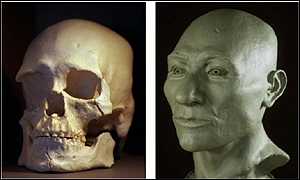"Recent data based on archeological evidence and environmental records suggest that humans entered the Americas from Beringia as early as 15,000 years ago, and the dispersal occurred along the deglaciated Pacific coastline," said Antonio Torroni of Università di Pavia, Italy. "Our study now reveals a novel alternative scenario: Two almost concomitant paths of migration, both from Beringia about 15,000 to 17,000 years ago, led to the dispersal of Paleo-Indians—the first Americans."
Such a dual origin for Paleo-Indians has major implications for all disciplines involved in Native American studies, he said. For instance, it implies that there is no compelling reason to presume that a single language family was carried along with the first migrants.
All these remains and artifacts come from the years 12,000-9,000 BCE, when the Paleo-Indians supposedly arrived. Many people have surmised that the Paleo-Indians arrived much earlier than that, and now we have solid evidence.
If any non-Indians came to the Americas before Columbus, it's totally irrelevant. The Paleo-Indians predated them by several thousand years, at least.
For more on the science behind this discovery, see Whence the First Americans?
Below: "I need your help to retain my place of primacy, Number One."
"You want me to locate an Anglo ancestor on this continent who's older than 17,000 BCE, sir?"
"Yes. Make it so."


No comments:
Post a Comment
Note: Only a member of this blog may post a comment.